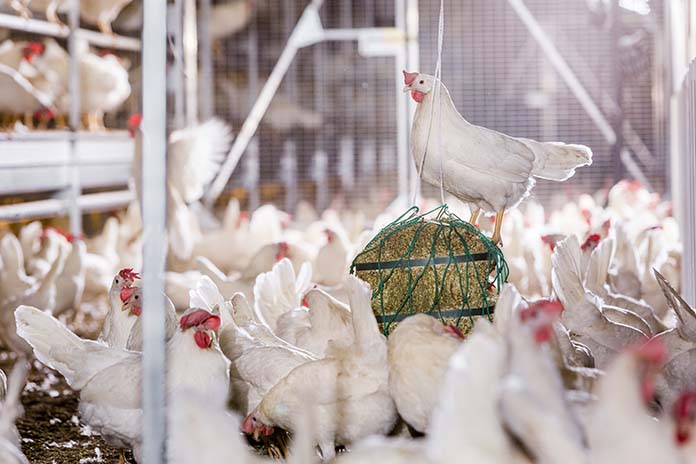
Hot conditions significantly affect the performance of layers, particularly in temperatures higher than 30°C. Getting good technical results requires some adjustments in the management of layer flocks. The main impact of hot temperature is on the daily feed intake, which can affect growth during the rearing period and egg production during the production period.
General management
Ambient conditions must be optimum in terms of density, ventilation, and access to water and feed (density on the floor must not be more than six birds/m² in hot conditions). Fans can be added to increase air speed inside the house (an increase of 0.2m/s reduces the temperature felt by the birds by 1˚C). In the case of an open house system, curtains should be added to the side of the house in order to reduce light intensity. Control of bodyweight is very important as good bodyweight is one of the key factors to achieve optimum performance. Any deviation must be detected quickly in order to adapt management as soon as possible and limit the impact on production. A weekly measurement until the end of the growth period (0-30 weeks) is necessary.
Feeding
Feed presentation must be good in order to optimize feed consumption and get the best possible growth and production. Do not hesitate to maintain starter feed (crumble feed presentation is recommended for the starter feed) until six weeks of age if growth is not good enough in the first weeks. We recommend allowing the birds to empty the feeders in the hot period of the day to guard against selective feeding and to give the last feeding three hours before lights off. The feed formula (protein level in particular) must be adjusted to compensate for lower feed intake levels seen during higher temperature periods.

Importance of drinking water
Water quality can deteriorate more quickly than in temperate countries. Therefore, water must be treated to be of good quality. Chlorination is the easiest way to treat the drinking water. Residual chlorine levels must be checked in the end of the drinking system once per week to ensure that this is effective. Water temperature is also a key point as it influences the feed intake. The water tank must not be exposed to direct sunlight and temperatures should be kept as cool as practical. Flushing the pipes can help to maintain fresh water in the pipes and avoid stagnant water whose bacteriological quality may decrease.
Biosecurity
We often see open house systems in hot conditions. This increases the risk of introduction of contaminants in the flock. Strict biosecurity rules must be applied: houses must be bird-proof and rodent-baiting stations must be installed around the house. Ideally farms should not be placed close to another poultry house. Single age farms are also desirable.
Overheating of birds
In case of overheating, electrolytes (KCI) and antioxidant products (C or E vitamins can be used in the drinking water to reduced stress induced by high temperatures (oxidative stress and respiratory alkalosis). With these techniques in mind, egg producers will be well equipped to manage the potential challenges of an extreme climate and achieve the best performance from their birds.
















